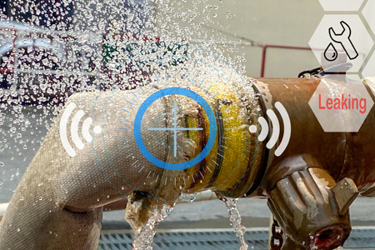Why IoT Is Crucial For Modern Water Treatment Automation
By Emily Newton

Professionals interested in smart water treatment often explore how Internet of Things (IoT) sensors can get them closer to their goals. These devices track data in real time, revealing how leaders should optimize their processes. IoT products also align with automation objectives, reducing the manual oversight workers have on essential processes and increasing efficiency. What are some potential benefits associated with applying IoT technologies?
Resource Conservation
As decision-makers explore process improvement possibilities, many face increased stakeholder pressure to operate sustainably. Although people take numerous approaches, one of the most popular first steps is to find and reduce sources of waste. IoT sensors placed throughout a smart water treatment plant can identify leaks, inappropriate chemical usage, and other issues that may make facilities run wastefully.
Curbing resource waste is especially important in locations with pressing shortages. One founder of a B2B company that uses IoT and artificial intelligence to cut waste and improve operational efficiency used that challenge as inspiration. He wanted to address how more than 600 million Indian residents live with severe levels of water stress. The entrepreneur realized that more efficient and sustainable water treatment plants would positively contribute to greener futures.
One of the company’s offerings measures flow rate and water levels in real time, sending the data to the cloud. Users can then review consumption patterns and check for unusual usage spikes that could indicate unaddressed problems. Internal data suggests the technology can help wastewater treatment plants reduce wasted water by up to 30%.
It assists employees by pinpointing non-revenue losses, which occur when utilities cannot bill parties for produced water. The technology also gives prescriptive insights and sends immediate phone and browser interface alerts about abnormalities or other concerns, helping leaders stay aware from anywhere.
Usage Insights
Water meter readers were once essential for calculating consumers’ usage and gathering data to inform decision-makers whether they should upgrade their facilities to keep up with demand. However, IoT sensors have automated this process, enabling human workers to retrain for other roles.
In one example of a smart water treatment application, a water management company partnered with a Spanish mobile telecommunications operator to conduct a trial involving over 1 million meter-reading IoT sensors. This effort is part of a larger campaign that will eventually connect 3 million customers to that infrastructure. Decision-makers anticipate that the rollout will improve their understanding of water usage and efficiency, allowing them to find more appropriate ways to meet customers’ needs.
These metering improvements apply to households, industries, and public entities and allow the water company to gather and analyze more data than it could with previous methods. The solution can also automatically detect patterns associated with potential fraud, prompting managers to investigate. Hourly measurements within the smart water treatment plant also warn parties of leaks. Since those screenings happen frequently, leaders can stay on top of operations and respond quickly to suspected problems.
Similarly, parties using the water infrastructure for household or business needs receive daily consumption alerts, including data showing potential leaks. They then automatically receive bills for the exact amounts used rather than estimates. That increased transparency helps people within and outside water plants create baselines and identify opportunities to minimize usage.
Tighter Security
The United States’ water infrastructure includes more than 148,000 public systems. Criminals see them as tempting targets, knowing successful physical infiltration or cyberattacks could disrupt water supplies for millions of people and capture headlines. Fortunately, numerous protective measures exist, and many relate to the IoT and automation.
For example, a smart water treatment plant could have connected security cameras that automatically learn to recognize employees and other permitted parties versus potential intruders. These cameras can broadcast data to authorized users regardless of location. Similarly, cybersecurity platforms improve access control by enabling decision-makers to set specific parameters that dictate whether people can use specific tools or retrieve digital resources.
IoT management platforms show all the connected products used in a smart water treatment environment. Security experts can quickly identify outdated software, weak passwords, or other security risks. Automated features can also update those devices outside a company’s busiest periods or when those upgrades will be least disruptive.
IoT sensors can secure physical aspects, such as doors or hallways. Many feature biometric or card readers, requiring people to identify themselves before proceeding. Since these systems typically work in seconds, technology removes cumbersome steps, like signing in with guards or at reception desks.
They also keep security tight during periods with fewer employees than usual inside the treatment facilities. Malicious parties may initially see those times as the best attack opportunities. However, the presence of automated and connected technologies can discourage them by reinforcing that their targets are well-protected and not worth their time.
Reduced Disruptions
Creating a smart water treatment plant is also a practical way to reduce operation-halting events. Fatbergs are good examples of such ongoing problems. Although only about 5.2 million people live in Ireland, the country’s water infrastructure professionals dealt with 10,000 blockages in one year.
Professionals have sought ways to spot fatbergs and similar issues before they get large enough to cause widespread disruptions. IoT-generated data could reveal that certain parts of the water infrastructure are prone to problems, prompting water utility experts and local authorities to remind the public of how seemingly minor decisions — such as flushing wipes rather than putting them in wastebaskets — could clog sewer lines. These issues cause foul smells, backups, property damage, and other negative outcomes.
Parties involved in a large Australian project recognized that IoT technologies are essential for warning them of problems that could temporarily shut down parts of the water network. They created an initiative featuring 9,000 sensors that detect approximately 20 blockages monthly, saving $400,000 in incident-related expenses.
Installers placed the sensors along existing infrastructure, focusing on the areas that collectively cause 70% of waterway overflows in Sydney. They also configured them to automatically alert smart water treatment plant employees once the collected data reaches specific thresholds. This approach minimizes the need for manual assessments.
The sensors have warned of blockages at 400 environmentally high-risk sites so far, showing water plant workers which locations require urgent attention. These events also show decision-makers which issues most frequently cause blockages. Although consumer products — such as grease and wet wipes — are sometimes to blame, analyses showed tree-root penetration causes most problems.
Improved Quality
Better quality is one of the most discussed benefits of smart water treatment facilities. Employees can have more oversight into the effectiveness of their methods and whether they meet safety goals. Some metrics collected by connected sensors may show that professionals could get the same or better results by changing chemical dosages or making other tweaks that they would not know to do without studying the data.
Some people concerned with the future of water treatment have developed innovative and creative ways to combine the IoT with nature. In one example from Poland, plant workers rely on sensors attached to clams as part of their commitment to better water quality. Although the facility also relies on more conventional methods, they use clams because they are a much faster indicator of water quality than standard tests.
Mollusks keep their shells open or shut depending on the characteristics of the liquid surrounding them. Clams are filter feeders and avoid absorbing toxins by closing in the presence of unclean water.
The clams have a spring, magnet, and magnetic sensor attached to them so workers don’t have to continually observe their reactions. The distance between the magnet and the sensor reduces when the clam opens and increases as it closes. A remote IoT server receives the data feed and automatically deactivates the relevant water controls when a clam closes its shell. That movement triggers people to investigate.
Although this application is unusual within smart water treatment, it shows how people can use IoT technology by thinking outside the box. This use case can encourage lesser-known methods alongside well-established ones.
IoT Technology Is Foundational To Smart Water Treatment
Although the IoT has become a buzzworthy topic among professionals concerned with water infrastructure, some have yet to consider how they would apply it and how the potential outcomes would affect their work.
However, these diverse examples show plenty of ways to use it, especially when parties want to automate more internal processes. Decision-makers should apply the technology, considering which goals they hope to achieve.
 Emily Newton is an industrial journalist. She regularly covers stories for the utilities and energy sectors. Emily is also editor in chief of Revolutionized (revolutionized.com).
Emily Newton is an industrial journalist. She regularly covers stories for the utilities and energy sectors. Emily is also editor in chief of Revolutionized (revolutionized.com).
